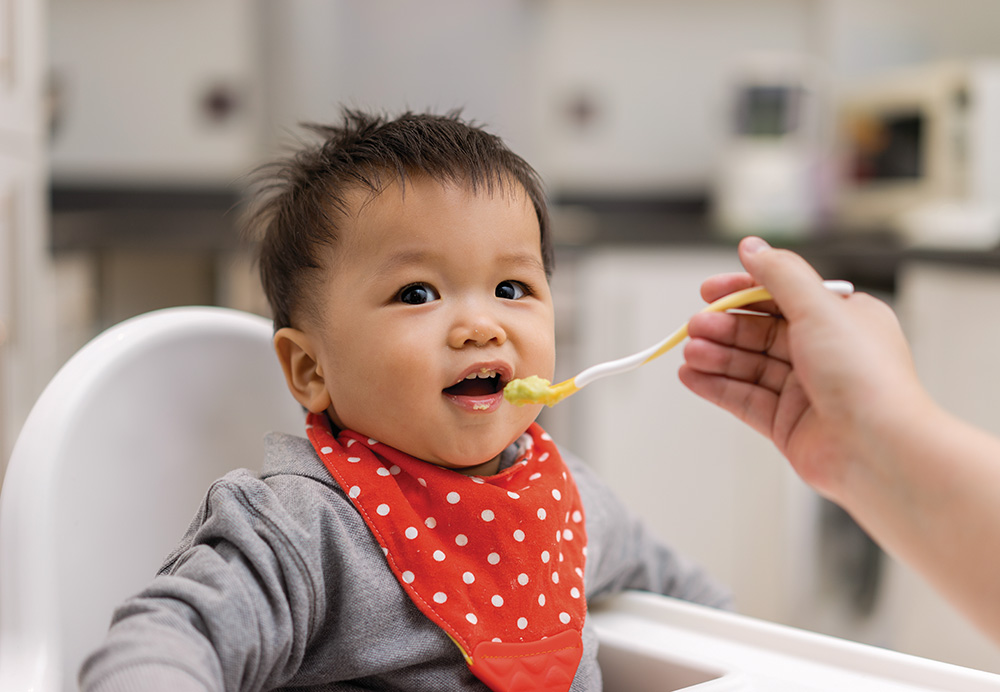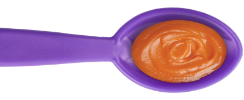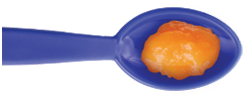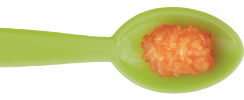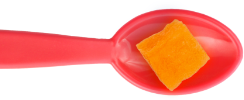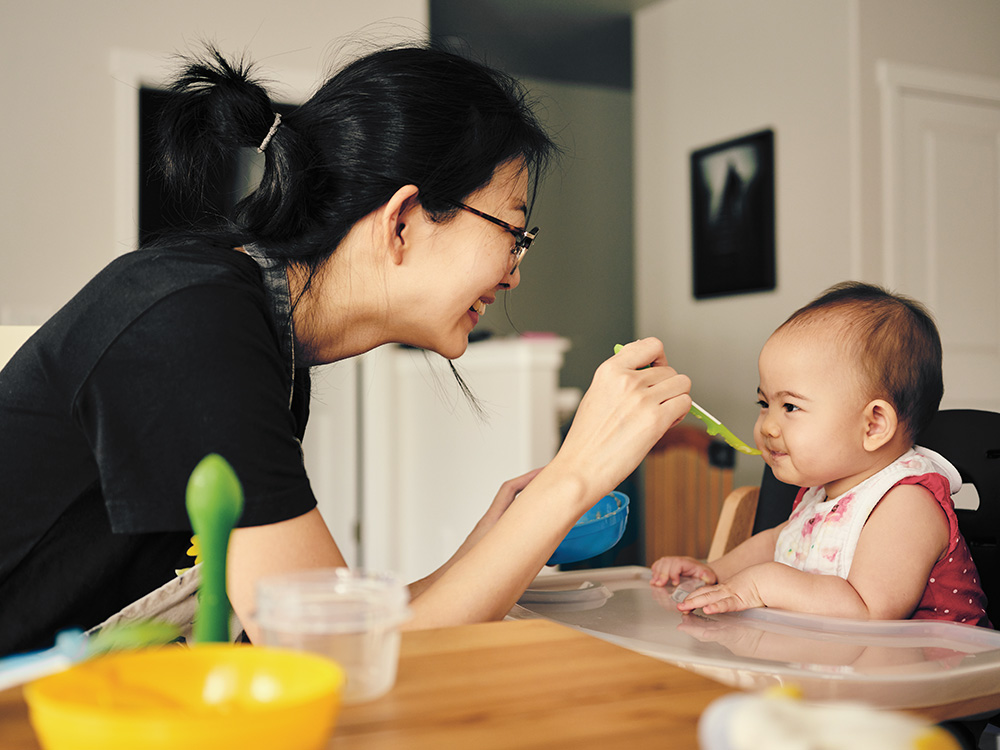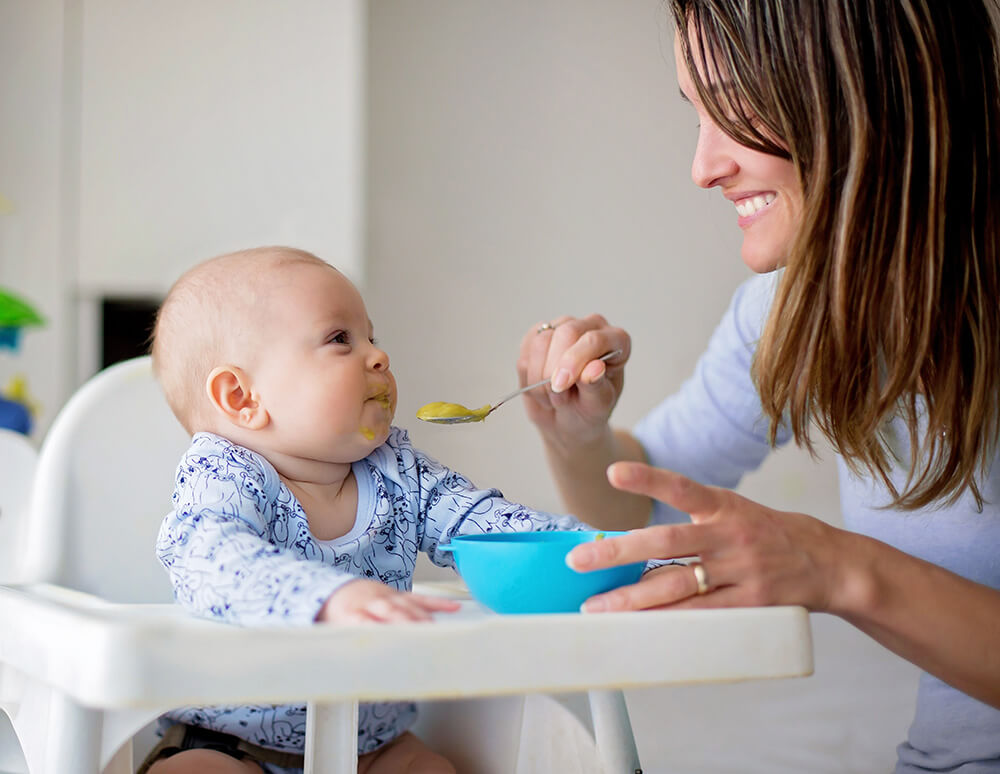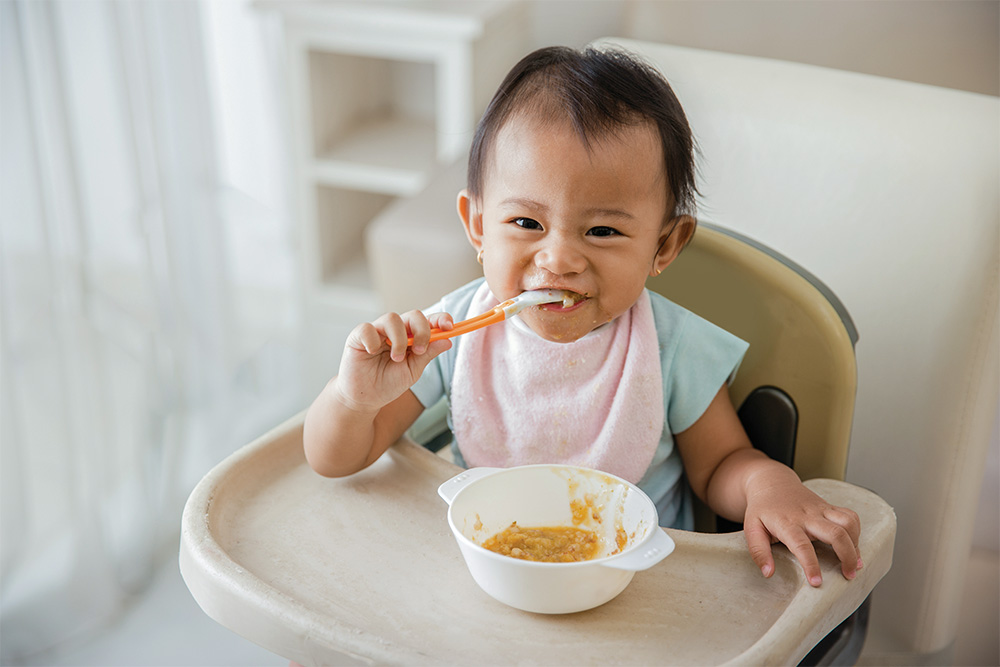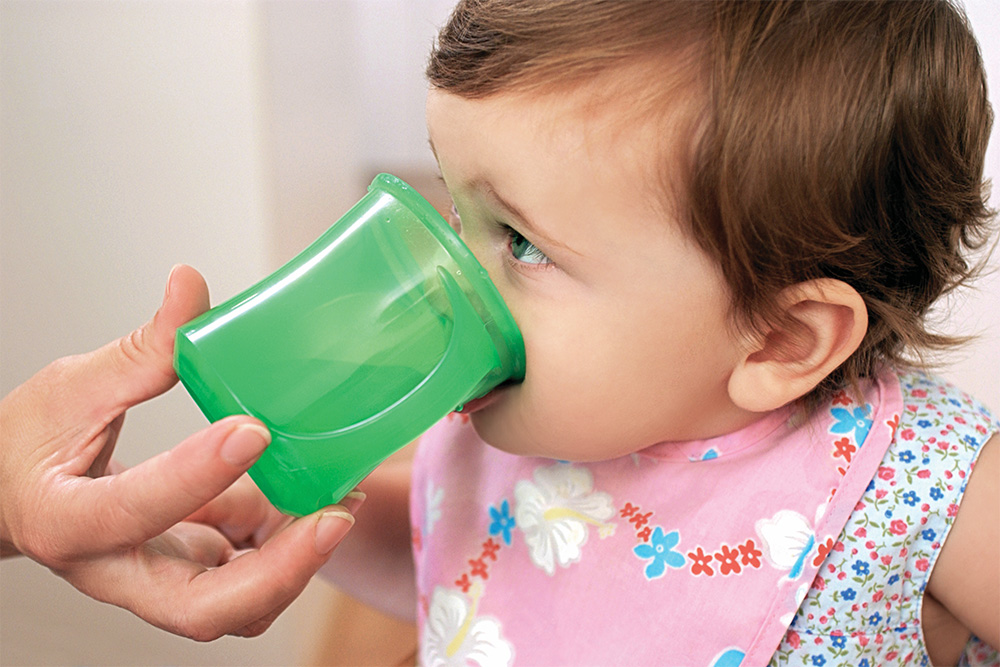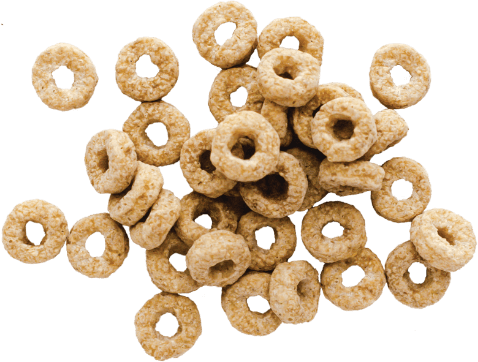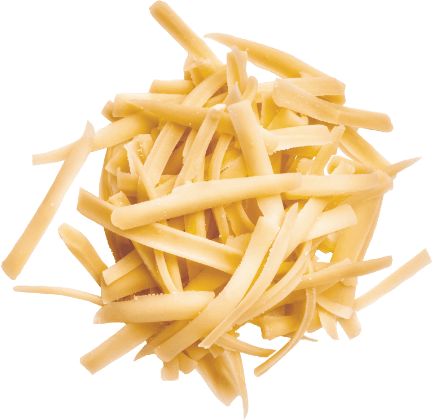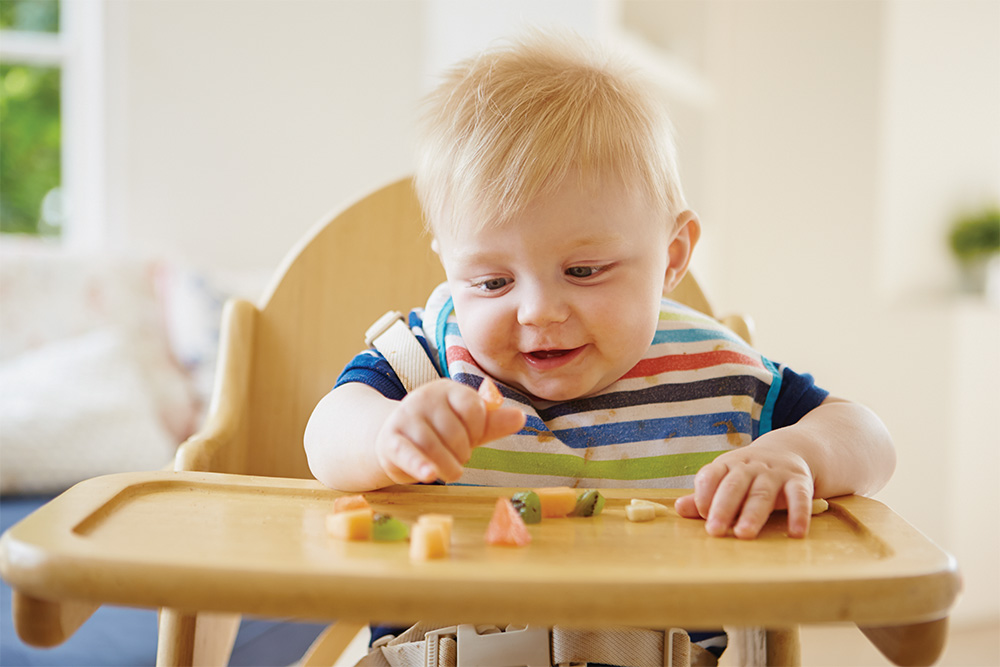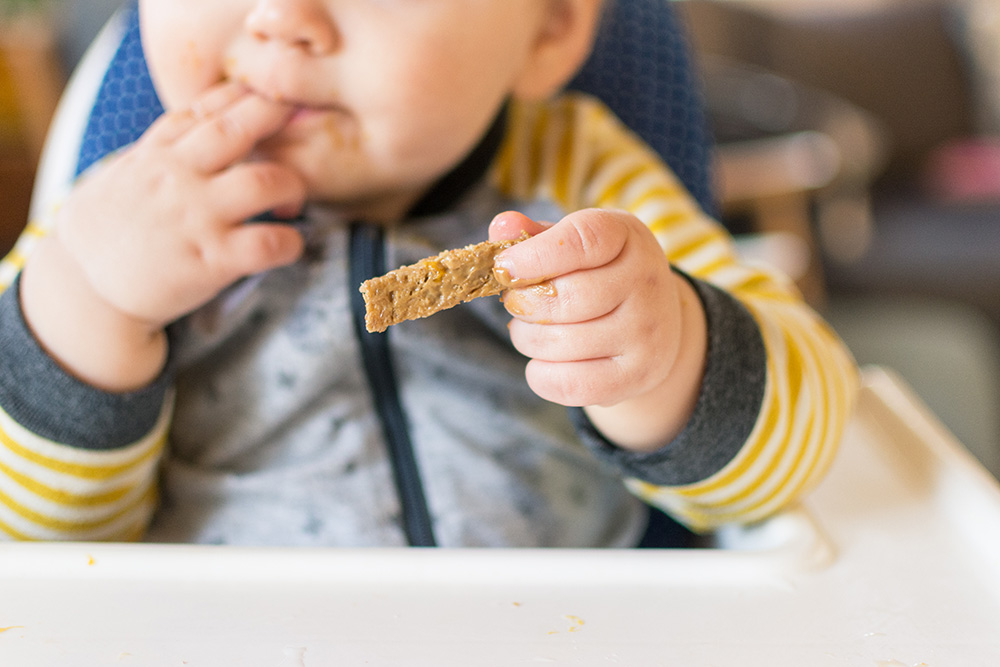Starting Solid Foods

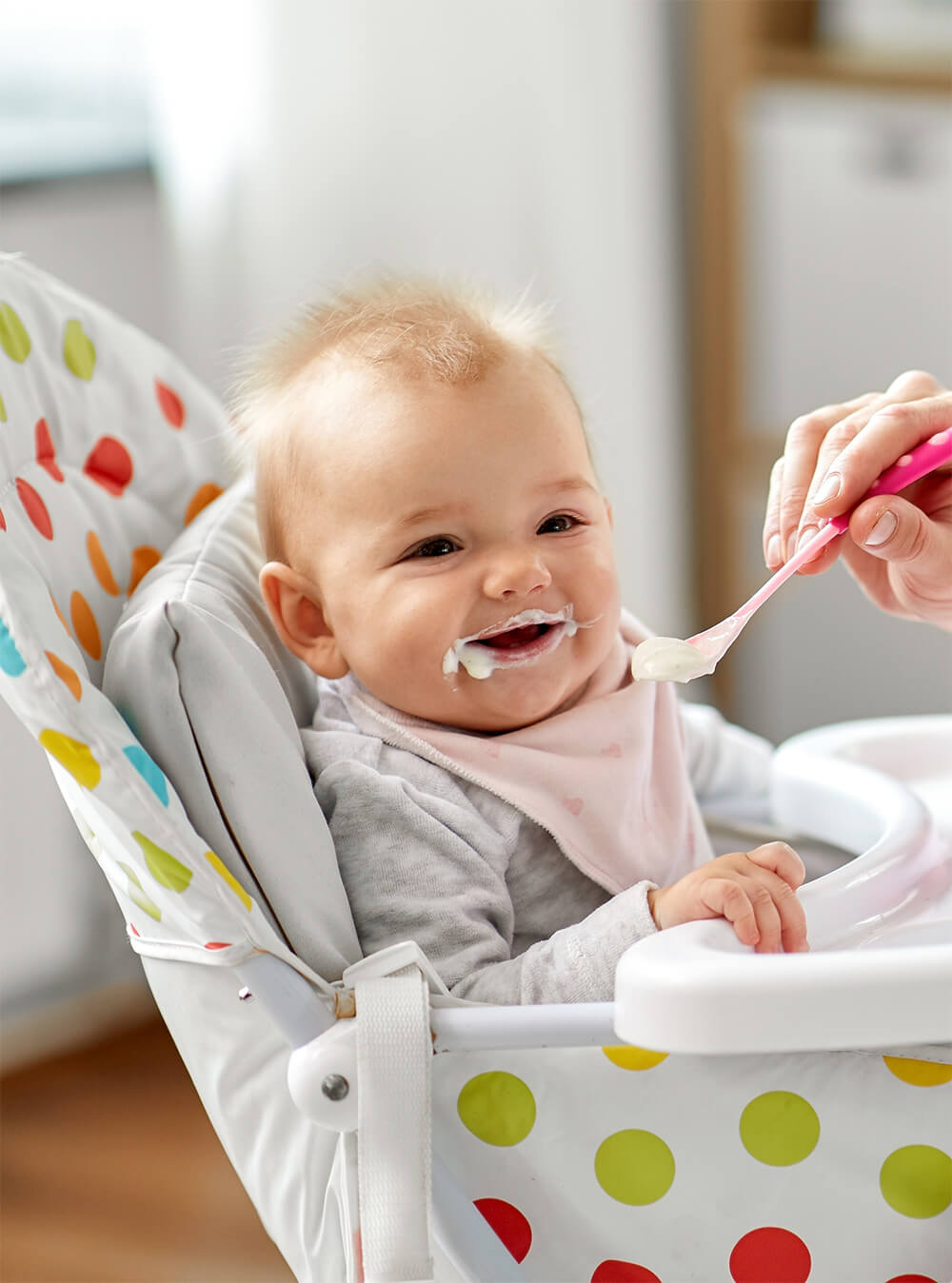
Your baby will move through 4 stages of foods:
Start off slowly with small amounts of puréed (smooth) or mashed foods. At around 7 to 8 months, offer mashed foods with more lumps and chopped, soft finger foods. Next, provide chopped and some pieces of firmer finger foods around 8 to 12 months.
Take it slow! Be sure your baby can eat and swallow foods from one stage before moving on to the next.
6 Tips for Getting Started
- Offer solid food after feeding breast milk or formula.
- Start with 1 to 2 tablespoons of soft, easy to swallow foods, such as baby cereal, puréed or well mashed foods.
- Choose a food high in iron and zinc, like puréed meat or WIC-approved baby cereal.
- There is no need to give food in a certain order.
- Offer one new food every 3 to 5 days. Watch for any bad food reactions like rash, diarrhea or vomiting.
- If your baby becomes upset or won’t eat, do not force it. Offer the food again at another time.
Make It Plain
- Offer many different foods without added sugar, salt or fat.
- Babies often learn to like new foods after it’s been offered many times.
Avoid these foods until your baby turns 1 year old.
- Cow’s milk or other non-dairy milks (like soy or almond milk). It’s too hard for your baby’s young body to digest and may cause health problems.
- Honey and foods made with honey. Honey can contain bacteria that cause infant botulism, a serious illness. These bacteria are harmless to older kids and adults.




